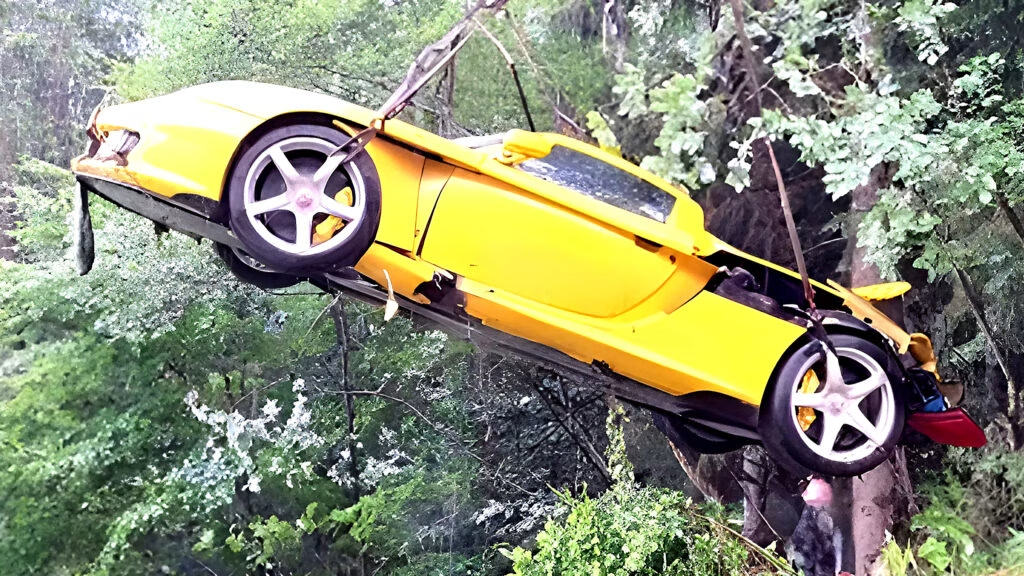What caused the Porsche Carrera GT crash in the Austrian Alps?
A Fayence Yellow Porsche Carrera GT, one of just 89 ever painted in this distinctive shade, recently met a rough fate on the slippery roads near Strobl, at the foothills of the Austrian Alps. The culprit? A combination of narrow, rain-soaked mountain roads and the unforgiving physics that come with high-performance driving. While the exact cause hasn’t been officially confirmed, it’s easy to picture what went wrong: a tight corner, a bit too much speed, and either understeer or oversteer sending the car off the edge and down a steep embankment.
This isn’t just any sports car mishap. The Carrera GT is known for its raw, analog driving experience—no modern stability control, just anti-spin. That means when things go sideways, there’s little electronic safety net to catch you. Even the best tech can’t bend the laws of nature, especially when traction is at a premium.
How rare is a Fayence Yellow Porsche Carrera GT, and why does it matter?
The Porsche Carrera GT already holds legendary status among car enthusiasts, but this particular example is even more special. Out of the 1,270 Carrera GTs produced, only 89 left the factory in Fayence Yellow. That makes each one a unicorn in the world of hypercars. For collectors, rarity translates directly to value—both sentimental and financial.
When a car like this is damaged, it’s not just a loss for the owner. It’s a blow to the automotive world. These cars are rolling pieces of history, and each incident chips away at the already tiny number of pristine examples left. That said, the Carrera GT’s reputation for being challenging to drive is part of what makes it so revered. It demands respect, and stories like this only add to its mystique.
What does it take to recover a crashed supercar from a mountain embankment?
Getting a supercar like the Carrera GT back onto the road after a crash is no small feat—especially when it’s wedged down a steep, forested slope. Local firefighters in Austria spent over three hours on the recovery operation. The car’s carbon fiber monocoque, which is both lightweight and incredibly expensive, meant that brute force was out of the question. Specialists were called in to ensure the chassis wasn’t damaged further during the extraction.
To make matters more complicated, several trees had to be cut down just to create a path for the car to be winched out. The images shared by the local fire department show a battered Carrera GT, its rear end crushed and a quarter panel torn off. While the car is likely repairable, the bill will be eye-watering—think six figures, easily.
What can we learn from high-performance car crashes like this?
Incidents like this serve as a stark reminder: even the most advanced cars have limits, and those limits are often dictated by the environment, not just the machine. The Carrera GT, for all its pedigree, isn’t immune to wet roads or driver error. In fact, its analog nature means it’s less forgiving than most modern supercars.
According to a 2023 study by the European Road Safety Council, wet conditions increase the risk of single-vehicle accidents by up to 70% compared to dry conditions. Combine that with a powerful, rear-wheel-drive car and a challenging road, and you have a recipe for disaster if caution isn’t exercised.
For drivers, the lesson is clear: respect the conditions, know your car’s quirks, and never underestimate the road. Even seasoned enthusiasts can get caught out—sometimes all it takes is a split-second misjudgment.
How does this crash impact the Carrera GT’s legacy and value?
While this particular Carrera GT will likely be restored, its accident history will follow it forever. For collectors, a car with a “story” can sometimes add intrigue, but more often, it’s a black mark that affects value. That said, the Carrera GT’s status as an icon means it’s unlikely to be written off entirely. The rarity of Fayence Yellow examples only adds to the determination to save it.
Interestingly, the market for rare, damaged supercars has grown in recent years. Some buyers see an opportunity to own a piece of history at a slight discount, especially if the repairs are handled by marque specialists. Still, nothing beats an untouched, original example—something that’s becoming rarer by the year.
What’s the big takeaway for supercar owners and enthusiasts?
If there’s one thing this story drives home, it’s that owning and driving a high-performance car is as much about responsibility as it is about passion. The Carrera GT rewards skill and respect, but punishes complacency. For those lucky enough to get behind the wheel, preparation—like checking weather conditions, understanding the car’s limits, and even investing in modern tires—can make all the difference.
The big takeaway? Enjoying a legend like the Carrera GT isn’t about perfection—it’s about smarter adjustments. Start with one change this week, and you’ll likely spot the difference by month’s end.

